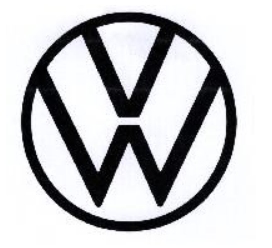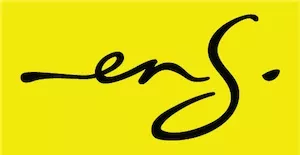In this article, we discuss a case in Taiwan dealing with confusingly similar trade marks, as well as an EU case that shines a light on certain trade mark principles. To begin, we'll take a look at Taiwan and the VW device mark.
The trade mark application
On 18 September 2023, a company called VISION (SHANGHAI) BRAND MANAGEMENT CO., LTD. ("Vision") filed an application to register the trade mark, VSW (stylised) in Taiwan. The application was filed in class 25 and it covered a range of goods including shoes, hats, socks, sweaters, clothes, vests, shirts, pants and others. Below is the stylised trade mark:

The trade mark opposition
The German company, Deutsche FUCHS Automotive Co., Ltd ("Volkswagen"), is the registered owner of stylised VW trade marks in class 25 for clothing articles in Taiwan. Volkswagen opposed the application for the registration of the trade mark, VSW (stylised) based on alleged violations of parts of Taiwan's Trade Mark Act, which ban registering a trade mark that's the same as or similar to someone else's trade mark for related goods or services and/or the same as or similar to a famous trade mark.. Here are the representations of the stylised VW trade mark:


The IP Office ruling
On 19 February 2025, Taiwan's IP Office ("TIPO") dismissed the trade mark opposition by Volkswagen. TIPO ruled that Volkswagen's VW trade mark registrations would not be confused with the contested trade mark VSW.
In coming to this decision, TIPO considered the following issues:
The overall layout and visual design
TIPO made the point that both parties' trade marks feature the letters 'V' and 'W'. However, the overall layout and visual designs differ quite significantly. The letter S, which links the letters V and the W in the VSW trade mark, manages to create a totally different visual impression. TIPO said that the average customer who takes reasonable care when observing trade marks would have no difficulty distinguishing the two trade marks.
Similar goods
TIPO accepted that both Vision's VSW and Volkswagen's VW are applied for use in relation to similar goods.
Well-known trade mark
TIPO accepted that Volkswagen had established that the VW trade mark is distinctive in Taiwan, where it enjoys well-known status. Yet TIPO went on to make the following findings:
- The degree of similarity between the trade marks VSW and VW is low;
- The reputation of the VW trade mark is'concentrated'on the auto industry;
- There have been other trade marks featuring the letters V and W that co-exist with the VW trade marks and;
- There should be no confusion or dilution issue with the trade mark VSW being registered in the clothing class.
No evidence of bad faith
TIPO felt that there was no evidence to suggest that there was any intention on the part of Vision to 'take a free ride'on Volkswagen's VW trade marks.
Further, TIPO said that there was no evidence showing that Vision's application for VSW was based on bad faith or an intention to imitate Volkswagen's VW trade marks. TIPO made the point that the degree of similarity is low.
No obstacle to registration
TIPO concluded by saying that, given the fact that:
- the similarity between Vision's VS trade mark and Volkswagen's VW trade marks is low;
- both trade marks possess considerable distinctiveness; and
- there is no evidence showing any risk of dilution or bad faith; and
The registration of VSW does not violate the relevant provisions of the Taiwan Trade Mark Act.)
This case illustrates that even though Volkswagen's VW mark is well-known, TIPO found no risk of confusion with Vision's VSW trade mark due to clear visual differences and the lack of bad faith. It also highlights that fame alone does not guarantee protection — distinctiveness, design, and context are key factors that TIPO takes into account in trade mark opposition matters.
THE EU – MAY TEA
To end off, we are sharing some insights from reports that deal with an EU case involving an international registration for a trade mark that simply rolls off the tongue. Here it is:
майский чай
For the benefit of the odd reader who may be unfamiliar with this term, it is, of course, the Russian for'maytea'. The international registration covers 'tea' in class 30, and it designates the following countries: the Czech Republic, Germany, France, Latvia, Poland and Slovakia.
The case has been discussed in considerable detail elsewhere, and while we don't plan on doing the same, we would, however, like to focus on some general points of interest that were raised by the court in this case.
Here goes:
- Words are more important than pictures: We're told that 'consumers will more readily refer to the goods at issue by quoting the clearly visible word elements than by describing their figurative elements... Therefore, the word elements of the contested marks were more important.'
- Descriptive and distinctive words in one trade mark:The court considered the word'tea'to be descriptive, and the word'may'to be distinctive.
- Weak distinctive character: When it comes to determining the likelihood of confusion, it is worth bearing in mind that 'the impact of common elements with a weak distinctive character on the likelihood of confusion is low - conceptually, the common element 'tea' was deemed descriptive'.
Navigating the issue of confusing similarity can be complex. As these cases illustrate, even small design elements or differences in commercial context can tip the balance in certain territories. There can be many legal and practical hurdles to consider before applying for a trade mark and it is always wise to consult a trade mark practitioner early in the process to assess risks, strengthen your application, and avoid costly disputes down the line.
*Reviewed by Ilse du Plessis, Executive in ENS' Intellectual Property Department
The content of this article is intended to provide a general guide to the subject matter. Specialist advice should be sought about your specific circumstances.


